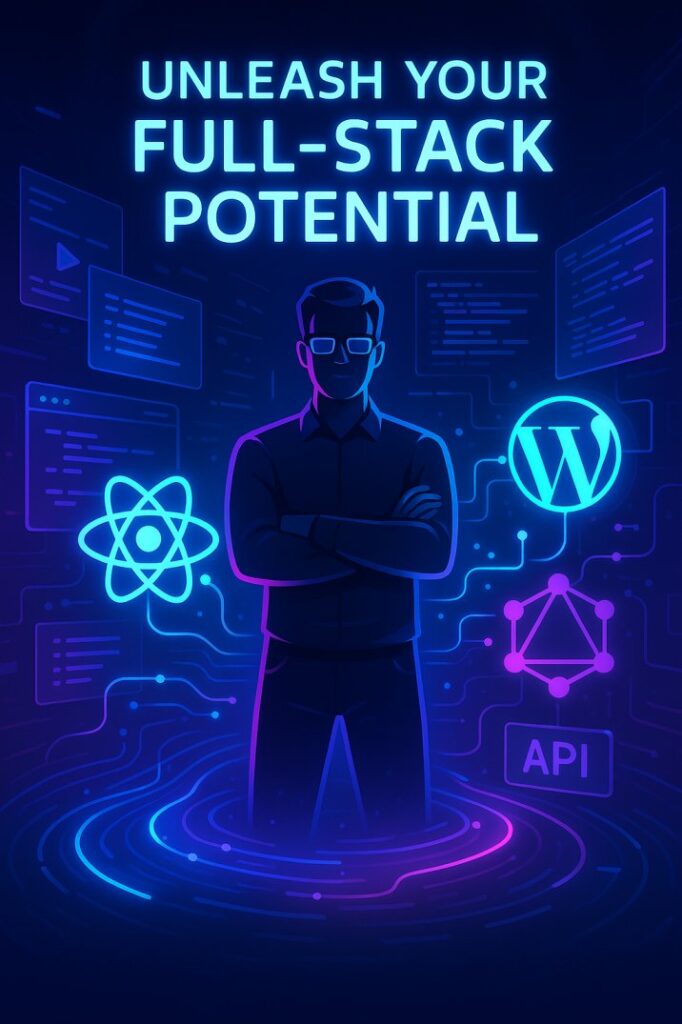Introduction
In the ever-evolving landscape of web development, businesses and developers are increasingly turning to headless architectures to deliver faster, more flexible, and scalable digital experiences. Traditional WordPress setups, while user-friendly, often struggle with performance bottlenecks and limited customization. Enter headless WordPress—a modern approach that decouples the backend (WordPress) from the frontend, allowing developers to leverage powerful tools like React while retaining WordPress’s content management strengths.
In this guide, you’ll learn how to bridge WordPress’s REST API with a React frontend to create a dynamic, high-performance website. Whether you’re building a blog, portfolio, or enterprise application, this step-by-step tutorial will walk you through setup, optimization, and best practices. We’ll also explore tools like ReactPress, a WordPress plugin that simplifies integration with React, to streamline your workflow.
By the end, you’ll understand:
- The benefits of a headless WordPress architecture.
- How to connect React to WordPress using the REST API.
- Key strategies for SEO, security, and performance.
- Alternatives and real-world use cases.
Let’s dive in!
What Is a Headless WordPress Architecture?
In a headless setup, WordPress functions solely as a content repository (backend), while the frontend is built using a modern framework like React. Content is delivered via the WordPress REST API, which serves data in JSON format. This separation allows developers to create highly interactive, app-like experiences without being constrained by WordPress’s theme system.
Why Choose Headless WordPress with React?
- Speed: React’s virtual DOM optimizes rendering for faster page loads.
- Flexibility: Design custom UIs without relying on WordPress themes.
- Scalability: Handle traffic spikes efficiently with a decoupled setup.
- Future-Proofing: Easily adapt to new technologies or APIs.
Why Use ReactPress?
ReactPress is a WordPress plugin designed to simplify the integration of React apps into WordPress. It automates configuration tasks like routing and server-side rendering (SSR), making it ideal for developers who want to focus on building rather than setup.
Key Features of ReactPress
- Built-in REST API Authentication: Securely connect React to WordPress.
- Server-Side Rendering: Improve SEO by pre-rendering React pages.
- Unified Dashboard: Manage React apps directly from the WordPress admin.
- Custom Routes: Define endpoints for dynamic content delivery.
Step-by-Step Guide to Building Your Headless Site
Prerequisites
- A working WordPress installation (v5.0+).
- Basic knowledge of React and JavaScript.
- Node.js and npm installed locally.
- A code editor (e.g., VS Code).Download here.
Step 1: Set Up WordPress and Enable the REST API
- Install WordPress on a local server or hosting platform.
- Verify the REST API is accessible at
yourdomain.com/wp-json/wp/v2.
Pro Tip: Use the WP REST API Controller plugin to customize API endpoints.
Step 2: Create a React Frontend
Initialize a React app:
npx create-react-app my-headless-site
cd my-headless-site
npm start Install Axios for API requests:
npm install axios Step 3: Fetch Data from WordPress
Use Axios to retrieve posts from the REST API:
import axios from 'axios';
const fetchPosts = async () => {
const response = await axios.get(
'http://your-wordpress-site/wp-json/wp/v2/posts'
);
return response.data;
}; Display the data in a React component:
function PostList() {
const [posts, setPosts] = useState([]);
useEffect(() => {
fetchPosts().then(data => setPosts(data));
}, []);
return (
<div>
{posts.map(post => (
<article key={post.id}>
<h2>{post.title.rendered}</h2>
<div dangerouslySetInnerHTML={{ __html: post.content.rendered }} />
</article>
))}
</div>
);
} Fetch data at build time with getStaticProps:
export async function getStaticProps() {
const res = await fetch('http://your-wordpress-site/wp-json/wp/v2/posts');
const posts = await res.json();
return { props: { posts } };
} Enable Server-Side Rendering (SSR)
For SEO, use Next.js to pre-render pages:
- Create a Next.js app:
npx create-next-app@latest SEO Best Practices
- Server-Side Rendering: Ensure content is crawlable by search engines.
- Dynamic Meta Tags: Use
react-helmetto update titles and descriptions. - Structured Data: Implement schema markup for rich snippets.
Performance Optimization
- Cache API Responses: Use Redis or WP Rocket.
- Lazy Load Assets: Delay loading images and components until needed.
- Compress Images: Convert images to WebP using a plugin like ShortPixel.
Common Challenges & Solutions
- CORS Errors: Add your frontend domain to WordPress’s
.htaccessfile:
Header set Access-Control-Allow-Origin "https://your-react-app.com" Slow API Calls: Implement caching with the WP REST Cache plugin.
Alternatives to ReactPress
- Frontity: A React framework optimized for WordPress.
- Gatsby: Generates static sites using WordPress data.
- Next.js: Supports hybrid static and server-side rendering.
Final Thoughts: Is Headless WordPress Worth It?
A headless architecture is ideal for projects requiring:
- Custom, interactive user interfaces.
- High traffic and scalability.
- Integration with modern tools like React.
While the setup requires more technical expertise than traditional WordPress, the benefits in performance and flexibility are unmatched.
Frequently Asked Questions (FAQ)
Q: Can I use WordPress plugins in a headless setup?
A: Yes, but only backend plugins (e.g., SEO tools). Frontend plugins like page builders won’t work.
Q: How do I handle user authentication?
A: Use JWT tokens or OAuth to secure API endpoints.
Q: Is a headless setup good for SEO?
A: Yes, especially with server-side rendering and proper meta tag management.
Ready to Get Started?
By combining WordPress’s content management with React’s dynamic capabilities, you can build websites that are both powerful and performant. Start your headless journey today!
Explore our guides on Getting Started with React and WordPress REST API Essentials for more insights.
